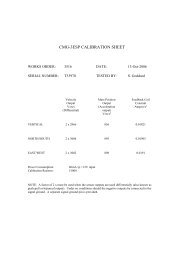NSM Handbook
NSM Handbook
NSM Handbook
Create successful ePaper yourself
Turn your PDF publications into a flip-book with our unique Google optimized e-Paper software.
STEP 3. DECIDE WHERE TO FASTEN<br />
FURNITURE<br />
DESKTOPS, TABLES<br />
AND WORKSPACES<br />
WALLS<br />
When items must remain free-standing, or the space between the<br />
their top and the ceiling is small, the methods show below can help<br />
reduce the risk of them toppling or sliding.<br />
COLUMNS, BEAMS<br />
AND FLOORS<br />
WALL BRIDGES<br />
Wall Types Not Strong Enough for<br />
Securing Non-structural Items<br />
• Gypsum Board<br />
• Traditional infill walls<br />
(bağdadi and hımış)<br />
• Aircrete<br />
• Very weak masonry walls<br />
(the mortar easily turns to<br />
sand when you rub it between your<br />
fingers)<br />
Solution<br />
Attach directly to the studs or<br />
make a wall bridge between<br />
the wood studs or timber<br />
framing members.<br />
Make a wall bridge between<br />
columns, also attaching the<br />
wall bridge to the wall at 15<br />
cm. spacing. Alternatively,<br />
secure items to structural<br />
elements.<br />
!<br />
For large<br />
free<br />
standing<br />
shelving,<br />
consult an<br />
engineer to<br />
determine<br />
appropriate<br />
size steel<br />
angle, bolt<br />
sizing, and<br />
connection<br />
placement.<br />
Row shelving can be secured by using steel L<br />
angle to secure the tops of the shelves together.<br />
The steel L angle must then be securely fastened<br />
to the wall.<br />
16<br />
• Adobe<br />
• Rubble stone<br />
Attach to wood structural<br />
members in the floor and<br />
ceiling.<br />
Shelf bottoms should also be attached directly to the floor using<br />
expansion bolts or L angle.<br />
21
















